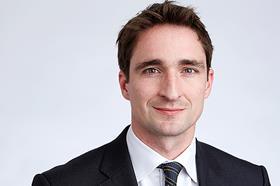A financial planner and an investment analyst at Tilney Smith & Williamson, soon to be Evelyn Partners, give their perspectives on post-COVID-19 investment strategies for high-net-worth clients

The outbreak of coronavirus (COVID-19) and government responses represents one of the most important events of our lifetime with geopolitical implications that will last for decades, if not longer.
For example, official figures show that public spending in the UK for 2020/21 was approximately £167bn greater than had been planned before the pandemic; most of this additional spending was directed to public services (such as the NHS) and financial support for businesses and individuals.
This huge increase in expenditure coincided with a smaller tax take due to the effective closing of huge swathes of industry. Thus, with spending up and income down, the government has, unsurprisingly, increased tax in a number of ways, as follows:
- the personal allowance, basic rate and higher-rate limits have been frozen at £12,570, £37,700 and £150,000 respectively until April 2026
- the dividend tax rate has increased by 1.25%
- national insurance contributions, for both employers, self-employed and employees have increased by 1.25%
- the inheritance tax nil-rate band, capital gains tax annual exempt amount and pensions lifetime allowance will be frozen until April 2026
- corporation tax will increase for companies with profits over £250,000 from April 2023
It is likely that many high-net-worth clients will be impacted by all of these changes, despite some negligible changes in the recent spring budget 2022.
On the other hand, according to Nationwide, average house prices in the UK increased by 14.3% over the year to March 2022 and the MSCI World Index is, as of 23 March 2022, 26% higher than its pre-COVID-19 peak. And again, clients are likely to be impacted by both rising property prices and investment markets over the same period.
Therefore, what does this mean for high-net-worth clients?
In short, the landscape has changed and while there will be winners and losers through this process, the outcome for many clients is uncertain.
This uncertainty over wealth and taxes is further compounded by consideration over health, working arrangements and inflation, to name a few factors.
Consequently, it is an excellent time to re-evaluate clients’ objectives and determine if they have changed. For example, a client previously focused on growth and accumulation might have reverted to protection and security for a myriad of reasons, not least of which is a renewed focus on health, both mental and physical.
Furthermore, due to the various nuances of these driving factors, it is helpful for clients to take stock of their financial position, which could have burgeoned into an unnecessarily complicated organism with significant complexity. This is usually the case with time-poor individuals where limited thought has been given to the overall plan or strategy, for both themselves and their family.
I have had many conversations with clients over the last two years who have wanted to change their lifestyles by, typically, bringing forward either their retirement or the bequeathing of assets, but nearly all have needed support to make those final decisions.
In cases like this, a professional adviser can add significant value by reviewing the overall position and assisting in the formulation of new goals. Then, together, a client and their adviser can determine if their assets are working towards these goals or if changes should be made to optimise their position.
More generally, while tangible value can be added in the usual topics of tax, structuring, planning and investments, intangible value can be gained through taking a proactive approach to managing the relationship, by ensuring the client knows you are ‘on their side’ and keeping their matters under review more regularly. Indeed, depending on the circumstances, this can have a great impact by strengthening the relationship between clients and advisers.
Overall, as the landscape has changed for high-net-worth clients, it is an excellent time to renew our relationships and take a more proactive approach to their management. In particular, great value can be added by re-evaluating goals, reviewing circumstances and organising financial arrangements.

Central banks and governments reacted forcefully to the pandemic, and their actions in slashing interest rates and providing support for the economy prevented a serious and permanent economic contraction. World output fell by 3.1% in 2020 and the UK economy shrank by a shocking 9.8% (source: IMF World Economic Output 2021), but it could have been much worse.
Governments took the strain, and consumers and businesses have been able to exit the pandemic in good shape. We entered 2022 on the crest of strong economic expansion, but with emerging stresses induced by an uneven recovery in some parts of the economy, tighter labour markets and troubled supply chains. Financial markets began to focus on these in January as the prospect of higher-than-expected interest filtered through. The Russian invasion in Ukraine happened on top and has had an impact on commodity and energy markets, which threaten higher inflation, economic growth and complicate the job of finance ministers and central bankers, who now have to pick their way through a maelstrom of forces acting on global economies and markets. On the one hand, these are signalling a potentially overheating economy, and on the other they raise serious questions about the future direction of growth. Financial markets have understandably been roiled.
From time to time regimes shift in economies and markets, but it is usually hard, to see them until they are in the rear-view mirror. We don’t profess to know the future, but here are three big themes that your clients should be considering:
The world order will evolve
The COVID-19 pandemic and the war in Ukraine are the latest in a series of events which have brought the global economy and markets to where they are today. The global financial crisis, TMT crash, collapse of Long-Term Capital Management LP and Russian financial crisis, Asian financial crisis and major events before them have all engendered a policy response born out of decades of monetary and fiscal thinking. This was shaped by the Washington consensus and a very western view of the world financial and economic order. Some of the consequences of that are low interest rates, relatively high levels of government debt and a reliance on consumer spending in advanced economies. The fragility of global supply chains, weaponisation of global trade and financial and economic markets (think sanctions on Russia), and China’s status as a global economic superpower, have all set the stage for change.
The implications of climate policy are now being understood
David Archer’s 2010 book, The Long Thaw, provides a compelling review of the theory and evidence which explain why global emissions of CO2 and equivalents, which are a by-product of human activity, have a negative impact on multiple aspects of the planet and its ecosystems. It’s fair to say that the emissions since industrialisation represent a cost of our choice of lifestyle. Regardless of personal views, many governments have committed to net zero emissions targets and are moving towards them, and these same targets are increasingly being adopted by businesses and individuals. It is very unlikely that government intervention will be reduced in future, as the full economic costs of cheap fossil fuels are now well understood. The war in Ukraine has focused everyone’s minds on energy prices, but the climate policy-led shift away from fossil fuels has already begun and is likely to play an accelerating role in the cost of energy for decades ahead.
The investment rules of the past may not work in future
Investors are rightly concerned with protecting against losses and we are often asked to comment on this topic. Here is an example: in mid-2008 before the global financial crisis intensified, a 10-year UK government bond offered an annual income of around 5%, but in 2022 the equivalent UK government bond yield was hovering at around 1%. With inflation well anchored to low levels over the last 14 years, falling interest rates and exceptionally forgiving monetary policy have left the prices of bonds high and their current yields very low. Simply put, we are not in the same world now that we once were, where investors could earn attractive returns from low-risk investments. Interest rates are now also rising from a low base and the low prospective returns for bonds mean they are unlikely to offer the same level of protection against equity losses that they once did. Equities and bonds have lost money at the same time in 2022.
What does that mean for investors?
High savings and low interest rates have pushed up asset prices as savers look for a home for their cash. Meanwhile low interest rates generally mean that anyone seeking out an attractive income from their savings faces a disheartening search. Paul Krugman’s ‘Pride and Prejudice and Asset Prices’, an article first published in the New York Times on 6 October 2021, demonstrates that there are different takes when it comes to the inequality debate. Savers have had to understand that landscape and take a total return mindset to ensure that they can live off capital too. That mix may change if interest rates and returns on investment pick up.
The purpose in highlighting these themes is not to try to predict the future, but we do try to prepare for it and with the nexus of geopolitical, financial and economic changes underway, your clients ought to consider the possibility that the world might be about to change from under us. Their wealth strategy should be focused on delivering outcomes, because there is a risk that the rules of thumb of the last 50 years are about to falter.
We think there are two takeaways at the moment. Number one, your choice of investment mix needs to reflect the current combination of opportunities and risk; our focus is on preserving capital in the places where returns are low, so we can offer the best platform for growing returns with inflation. Number two, your clients’ investments need to fit hand in glove with their overall financial planning strategy to have the best chance of meeting their needs, whatever the future holds.
To talk to one of the team about what this means for you and your clients, please contact Charlotte Fairhurst, business development director at Tilney Investment Management Services Limited. Call 07442 981982 or email charlotte.fairhurst@tilney.co.uk.
Tilney is a strategic partner of the Law Society.
Important information
This article is solely for professional advisers and should not be construed as investment advice. While considerable care has been taken to ensure the information contained within this commentary is accurate and up-to-date, no warranty is given as to the accuracy or completeness of any information and no liability is accepted for any errors or omissions in such information or any action taken on the basis of this information. The opinions expressed are made in good faith, but are subject to change without notice.
The value of investments can go down as well as up and investors can get back less than originally invested. Past performance is not an indication of future performance.
Issued by Tilney Investment Management Services Limited, which is authorised and regulated by the Financial Conduct Authority.





